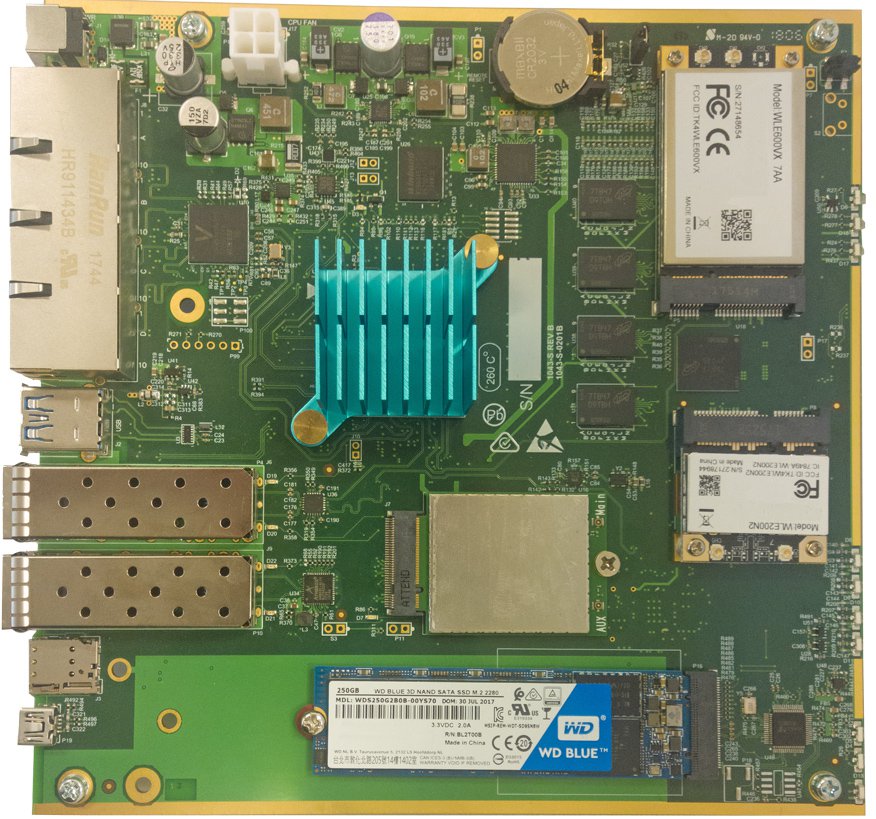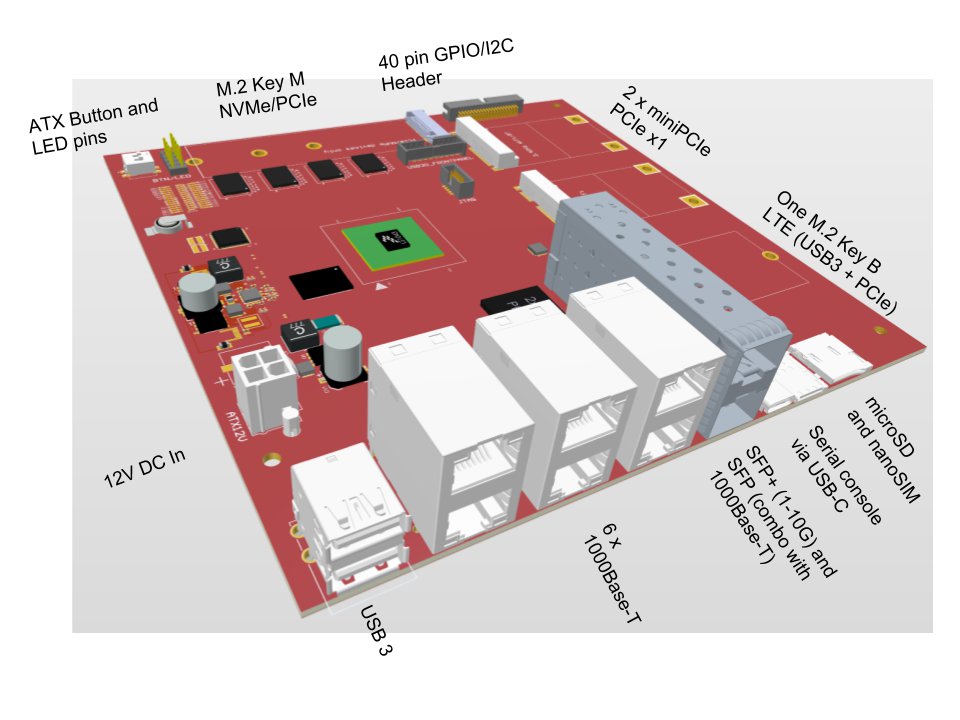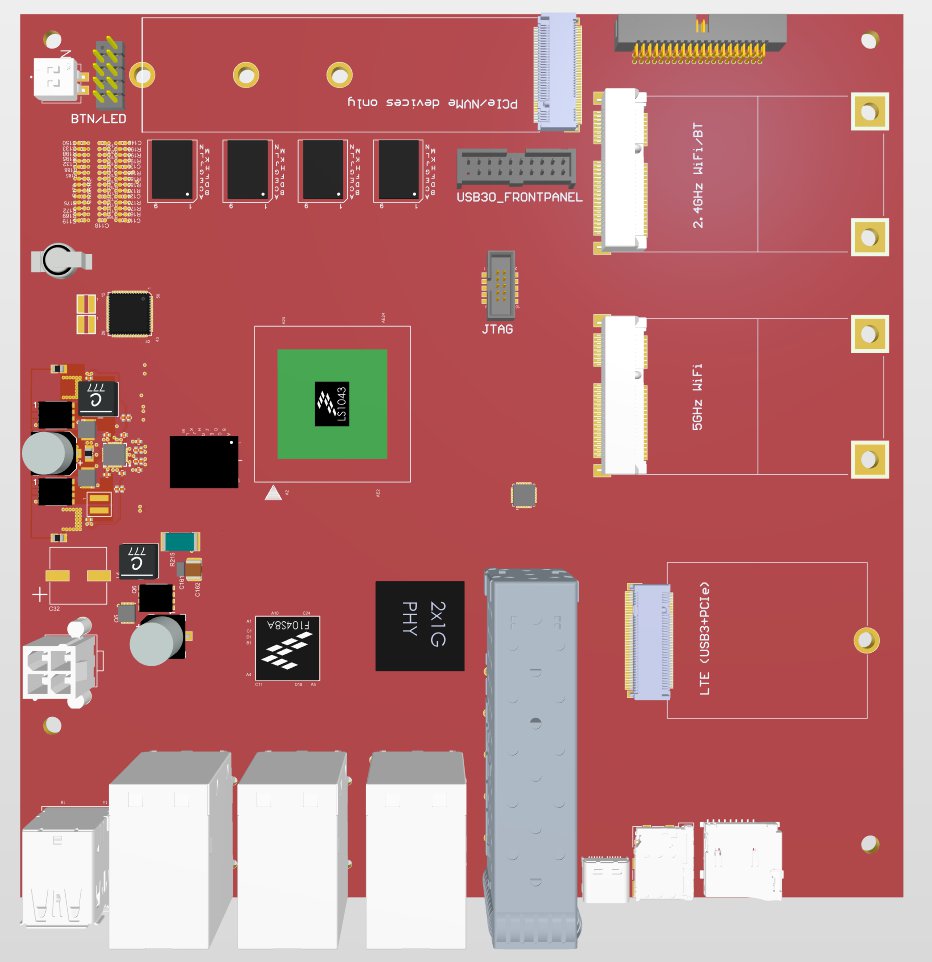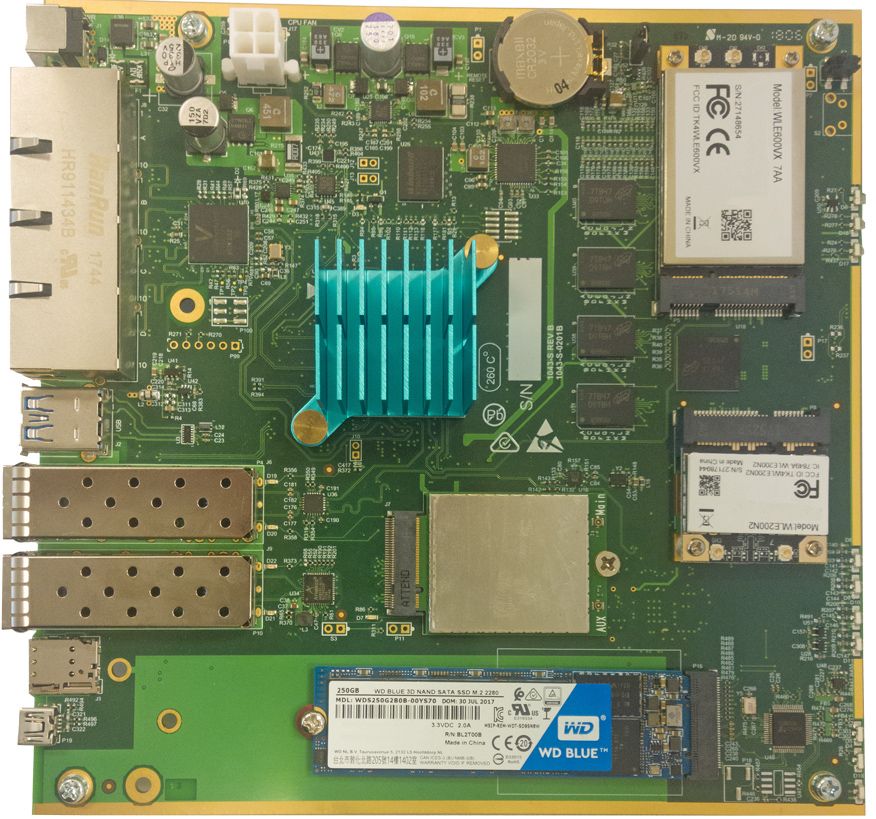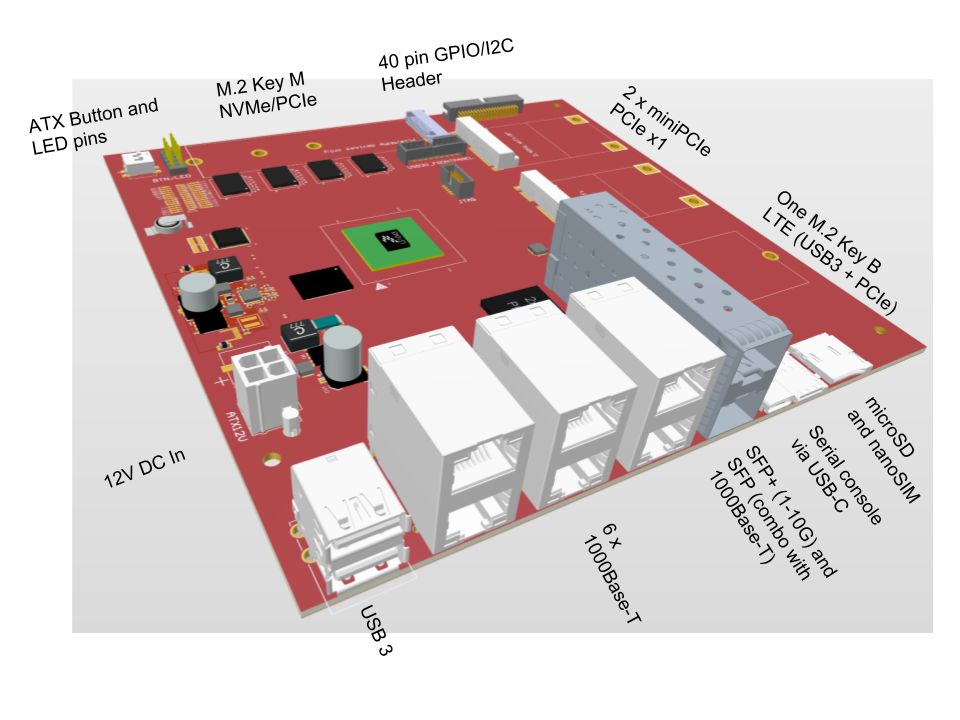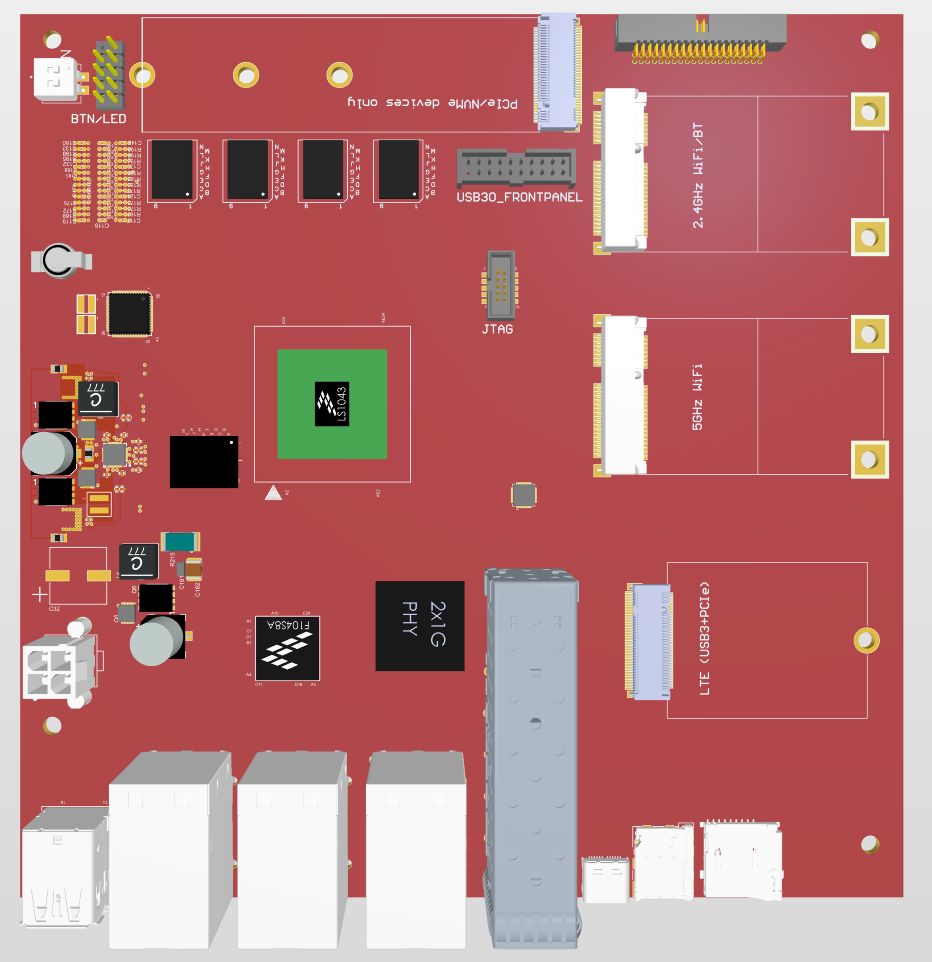Project update 3 of 20
Another Step Closer - New Prototypes and New Specifications
by Mathew MWelcome to another update on the Five64 project. In previous updates we noted our progress as we received our first LS1043 boards, updated the specifications based on feedback from industry partners, as well as some advanced testing we have performed to validate designs ahead of new revisions being committed to production.
The Five64 project is an offshoot of a series of products we have designed for our OEM/volume customers, on that front, we received our new OEM model ("LS1043S") prototypes, and we have been busy testing them and sending out samples to our initial customers.
With the OEM model on a firm path to production, we can now turn our attention to the Five64 project, which benefits from the engineering work we have performed up to now.
The New Five64
With two iterations of the LS1043 design, and extensive firsthand experience with our platform, we decided it was a time for a rethink of the Five64 spec before we started with the schematics and PCB.
| Feature | Specification |
|---|---|
| Processor | NXP LS1043A, 4x Cortex-A53 1.6 GHz, 1 MB L2 (shared), 10 W TDP (passively cooled with heatsink) |
| RAM | 8G B DDR4 1600 MT/s |
| Onboard Storage | 512 MB SLC NAND |
| Networking | 6 x 1000Base-T, One SFP+ (capable of 1/2.5/10G), One SFP (1G, combo shared with a 1000Base-T). All ports are actual Ethernet MACs - no switch |
| Expansion | One M.2 Key M (PCI Express, NVMe SSDs etc), 2xmPCIe (e.g., Wi-Fi), 1xM.2 Key B (e.g LTE), microSD |
| I/O Ports | 4 x USB 3 (2 x Rear Panel, 2 x via standard USB 3 header), USB-C serial console (onboard FTDI bridge) |
| Power In | 12 V Molex Mini-Fit (ATX12V connector pinout). ATX PSUs can be used with an adaptor cable |
| Form Factor | Standard Mini-ITX 170 mm x 170 mm |
| Hardware Hacking | DIP switch for bootloader source (between NAND, SD and external QSPI flash), One 40 pin expansion header (1.27 mm pitch) with access to CPU GPIO's (with IRQ capability), UART, I2C buses and QSPI flash lines |
| Sensors and Instrumentation | Temperature - board and CPU, Voltage and current on major power rails (CPU, 3.3, 5) and expansion card slots |
| Software | U-Boot 2018.X+, mainline Linux Kernel 4.15 onwards |
| Certifications (board only) | US, European and Australia & NZ (including FCC Part 15, CISPR Part 22, RCM) |
(Standard disclaimer: This is a mockup and the final version, as launched, may differ!)
Why have we changed the specifications?
Moving to dual stack network ports allows all I/O to fit inside a standard ATX/ITX I/O aperture.
This also allows us to expose more functionality than before, such as a microSD slot, SIM and USB console port, without requiring users to open their cases every time they need access.
Similarly, ATX "front panel" pins (Power/Reset buttons, LEDs) have been added, as well as a standard USB3 header for cases with front USB ports.
Furthermore, the new specifications open up more use cases - not just Wi-Fi.
Many of you are using discrete Wi-Fi solutions such as UniFi or home Wi-Fi meshes - and in a lot of instances, these provide a better user experience than ‘one box to rule them all’.
For those who want to run WiFi, High-end wireless cards are now available in standard form factors, so the need for an oversized slot is diminished.
With the space we gain back, we can squeeze in an M.2(M) slot for SSDs, which opens up the ability to use standard Linux distributions. Previously, this depended on a SD card, USB flash drive, or SATA controller.
That said, we have added some functionality to the miniPCIe and M.2 slots not present in our previous products, such as a PCIe lane to the M.2(B) for newer LTE cards, and a USB2 lane to one miniPCIe slot for Bluetooth radios.
We have bundles (boards + cases and relevant add in cards) in mind for various use cases - more details will be in our formal campaign launch.
Where to from here?
We are finalising the schematics for the Five64 now, and will commence routing the PCB, and then ordering the prototypes. Once the PCB routing is finalised we will definitely post the final render!
For a product of this complexity, the ‘compile’ cycle is very long (several months). Fortunately we can leverage the infrastructure in place for volume production of our OEM products in order to build new prototypes and revisions quickly.
Once we have prototypes in hand, we will launch the campaign.
